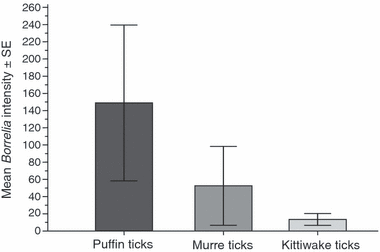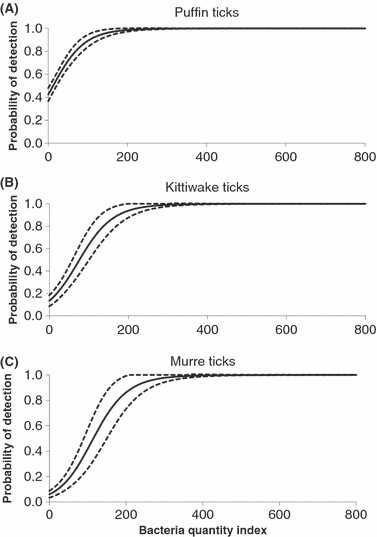Cryptic vector divergence masks vector-specific patterns of infection: an example from the marine cycle of Lyme borreliosis
- PMID: 25567933
- PMCID: PMC3352467
- DOI: 10.1111/j.1752-4571.2010.00127.x
Cryptic vector divergence masks vector-specific patterns of infection: an example from the marine cycle of Lyme borreliosis
Abstract
Vector organisms are implicated in the transmission of close to a third of all infectious diseases. In many cases, multiple vectors (species or populations) can participate in transmission but may contribute differently to disease ecology and evolution. The presence of cryptic vector populations can be particularly problematic as differences in infection can be difficult to evaluate and may lead to erroneous evolutionary and epidemiological inferences. Here, we combine site-occupancy modeling and molecular assays to evaluate patterns of infection in the marine cycle of Lyme borreliosis, involving colonial seabirds, the tick Ixodes uriae, and bacteria of the Borrelia burgdorferi s.l. complex. In this cycle, the tick vector consists of multiple, cryptic (phenotypically undistinguishable but genetically distinct) host races that are frequently found in sympatry. Our results show that bacterial detection varies strongly among tick races leading to vector-specific biases if raw counts are used to calculate Borrelia prevalence. These differences are largely explained by differences in infection intensity among tick races. After accounting for detection probabilities, we found that overall prevalence in this system is higher than previously suspected and that certain vector-host combinations likely contribute more than others to the local dynamics and large-scale dispersal of Borrelia spirochetes. These results highlight the importance of evaluating vector population structure and accounting for detection probability when trying to understand the evolutionary ecology of vector-borne diseases.
Keywords: Lyme disease bacteria; pathogen detection; seabirds; site-occupancy models; transmission ecology.
Figures


References
-
- Adak T, Sarbjit K, Singh OP. Comparative susceptibility of different members of the Anopheles culicifacies complex to Plasmodium vivax. Transactions of the Royal Society of Tropical Medicine and Hygiene. 1999;93:573. - PubMed
-
- Altwegg M. General problems associated with diagnostic applications of amplification methods. Journal of Microbiological Methods. 1995;23:21.
-
- Anderson DR. Model Based Inference in the Life Sciences: A Primer on Evidence. New York, NY: Springer-Verlag; 2008a.
-
- Anderson DR. Model Based Inference in the Life Sciences – A Primer on Evidence. New York, NY: Springer; 2008b.
LinkOut - more resources
Full Text Sources

